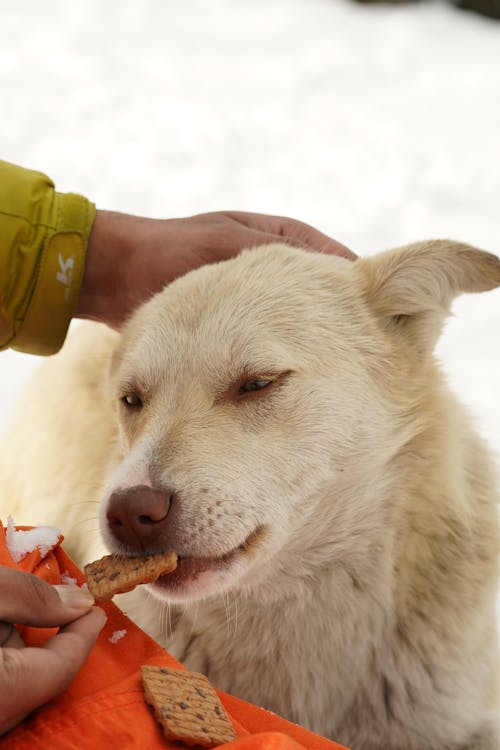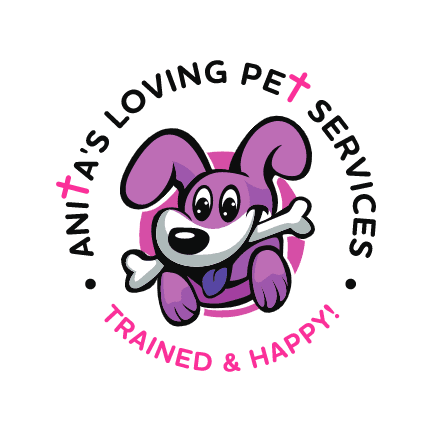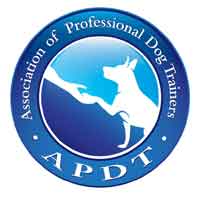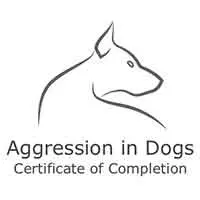How to Socialize an Aggressive Dog
Socializing an aggressive dog can be one of the most challenging tasks a pet parent or trainer faces, but it is also one of the most rewarding. Although aggression in dogs often stems from fear, past negative experiences, or a lack of proper socialization during their early development, guiding these dogs toward calmer, more confident interactions is possible.
You don’t need to avoid walks or visitors altogether because you fear unpredictable reactions. With patience, consistency, and a structured approach, you can help your dog learn that the world isn’t a scary place but one full of opportunities for fun and positive experiences.
The idea is to build trust, reshape reactions, and give your dog the tools to interact healthily with the world. As a pet owner, you play a crucial role in this process. By starting small, working at your dog’s pace, and taking one step at a time, you can guide your dog towards a calmer, more social life.
Why Is Your Dog Aggressive?

Understanding the root cause of your dog’s aggression is the first step towards helping them socialize. Aggression is never random; it always has an underlying cause. By gaining this understanding, you can be better prepared to address the issue and guide your dog towards healthier interactions.
Fear-based aggression is one of the most common reasons dogs lash out. A dog that wasn’t adequately socialized as a puppy or had a traumatic experience may see new people, dogs, or situations as threats. Instead of freezing or running, it chooses to fight. In many cases, what appears as aggression is a cry for help, a dog saying, “I’m scared!”
Some dogs are naturally more territorial or protective, making them suspicious of anyone who comes too close. While this instinct can be helpful, it becomes problematic when they see every passing jogger or visiting friend as an intruder.
Frustration can also contribute. Imagine being on a leash, watching other dogs play, but unable to join in. That pent-up energy has to go somewhere; it turns into reactivity for some dogs.
Medical issues can often contribute to aggression. Pain or discomfort from injuries or illnesses might make a dog more irritable and reactive. It’s crucial to rule out any medical conditions with your veterinarian before starting a behavioral program.
Past experiences shape behavior. If another dog has attacked a dog, handled roughly, or simply lacked positive interactions early in life, it may have no reason to trust strangers. Trust isn’t automatic—you’ll have to help it build, which is the first step in socializing an aggressive dog.
-
Building Trust and a Strong Bond
The first step in socializing an aggressive dog is to build a strong, trusting relationship. Trust is the cornerstone of any behavioral change. When your dog sees you as a source of comfort and security, it is more likely to feel safe enough to explore the world around it.
Spend quality time with your dog in familiar settings. Engage in activities that both of you enjoy—a quiet walk around the neighborhood, a playful game in the backyard, or simple cuddle time at home. Use these moments to reinforce positive behavior with gentle praise and treats. Establishing clear communication is also essential; use consistent commands and gestures so your dog knows what to expect. A secure, trusting bond will stabilize your dog as it encounters new experiences.
2. Create A Safe, Controlled Environment
Forget the idea that socializing your dog means taking it straight to a dog park or into a crowded space. That’s a recipe for disaster. Instead, create an environment where your dog feels safe and in control.
Begin in low-stress situations—a quiet park, an empty field, or a backyard. The goal is to expose your dog to the world in a way that doesn’t immediately overwhelm it. Keep your dog’s leash loose, your voice calm, and its favorite treats handy.
Once your pup has mastered staying cool, it’s time for a little challenge. If your pup is wary of other dogs, take a relaxed stroll where they can see but not interact with them. Let them take it all in like a curious spectator at a doggy parade. Reward their calmness with treats and praise, reinforcing that other dogs are just part of the scenery, not a cause for concern!
A solid daily routine is essential. Dogs thrive on predictability. If your dog knows when to expect meals, walks, and quiet time, their anxiety decreases, making them more receptive to training. A dog who feels safe at home will be much more willing to explore beyond it.
3. Teach Them to Look to You for Guidance

One of the most valuable skills you can teach a reactive dog is checking in with you. If they trust you to handle a situation, they won’t feel the need to react aggressively.
Start with something simple: say their name, and reward them when they look at you. Do this often, in different environments, until looking to you becomes second nature. Eventually, when faced with a stressful situation, their instinct will be to turn to you rather than react impulsively.
Using a command like “focus” or “watch me” can be incredibly helpful in redirecting their attention away from a potential trigger. This is especially useful when passing another dog or a stranger on a walk. Instead of fixating on what scares them, they’ll learn to rely on you for reassurance.
4. Gradual Exposure: One Step at a Time
The key to socialization is controlled exposure—not flooding your dog with overwhelming experiences. This means introducing new people, animals, and environments in a way that sets them up for success.
If your dog reacts aggressively toward other dogs, start by watching dogs from a distance where they feel comfortable. If they tense up or growl, increase the distance until they relax. Slowly, over days or weeks, decrease that distance as long as they remain calm.
For dogs wary of strangers, let them observe people from a distance without being forced into interactions. If you have a willing friend or family member, start with brief, non-threatening exposure—having them toss treats from afar without approaching. Let your dog dictate the pace.
Once your dog can observe strangers without reacting, you can invite someone to toss a treat from a distance. Ensure that the person is calm, avoids direct eye contact, and does not make sudden movements. These small, controlled interactions help your dog develop a positive association with new people. With time and careful management, your dog can understand that unfamiliar faces are not threats but potential friends.
The goal isn’t to make your dog love every new experience but to help it tolerate and feel safe in different situations.
5. Desensitization and Counterconditioning:
Desensitization and counterconditioning are like superheroes for helping dogs stay calm under pressure. Desensitization involves introducing your pup to a trigger at a super low intensity so it doesn’t freak out, then gradually increasing the intensity over time. Counterconditioning takes it a step further, pairing that trigger with something extraordinary to turn an adverse reaction into a positive one.
Say your dog gets worked up over barking sounds. Start by playing a quiet recording of barks while giving them belly rubs or tasty treats. Over days or weeks, slowly crank up the volume while keeping them relaxed and happy. Before you know it, barking won’t signal “danger” anymore—it’ll mean snack time! With patience and repetition, your pup will start seeing their old stressors as just another excuse for a reward.
6. Turn Socialization into a Positive Experience

Many aggressive dogs have learned that reacting keeps the scary thing away. Your job is to teach them that staying calm leads to good things.
Use high-value rewards, something they absolutely love, such as fresh chicken, a special toy, or extra belly rubs. Reward them generously every time they remain calm near a trigger. This will rewire their brains to associate positive things with previously stressful situations.
Avoid punishment-based techniques. Yelling, leash corrections, or physical punishment might temporarily stop the behavior, but they won’t change how your dog feels. Instead, they can make it more fearful and reactive in the long run.
Instead, focus on teaching alternative behaviors. If your dog typically lunges at other dogs, teach that sitting calmly earns a reward. If it barks at visitors, reward it for lying down instead. The more it practices calm behavior, the more natural it will become.
7. Know When to Step Back
Not every interaction will be successful, and that’s okay. Some days, your dog will surprise you with progress; other days, they may regress. If they have an outburst, don’t get discouraged—just take a step back and adjust your approach.
Recognizing stress signals is crucial. Stiff posture, whale eyes, lip licking, and tucked tails mean your dog is uncomfortable. If you see these signs, give them space before they escalate into aggression.
Take breaks when needed. Sometimes, taking a few days off from stressful situations can help reset your dog’s emotional state and prevent burnout.
Celebrate each victory along the way. Whether your dog merely glances curiously at another dog or calmly observes a new person from a safe distance, every moment of progress is a sign that it is learning to overcome its fear. With each new experience, your dog can grow more confident and less reactive.
How Long Will It Take to See Improvement?
There isn’t a universal timeline for aggressive dog training. Some dogs may show signs of improvement within a few weeks of consistent, positive exposure, while others may require several months. The pace of progress depends on your dog’s personality, history, and the consistency of your training efforts. Remember, patience and consistency are key. Despite slow progress, each small victory is a step toward a more confident and social dog.
Seeking Professional Help When Needed
If aggression is severe or doesn’t improve with training, don’t hesitate to seek professional help. A certified dog trainer or behaviorist can offer personalized strategies tailored to your dog’s needs. Professional guidance can prevent setbacks and ensure you use techniques that benefit your dog.
At Anita’s Loving Pet Services, we offer one-on-one behavior modification programs, helping owners navigate the challenges of reactive dogs.
Our South Bay dog training methods focus on gentle, practical techniques that set dogs up for long-term success.
We also provide expert dog training in Rancho Palos Verdes, Redondo Beach, and San Pedro, helping pet owners overcome the challenges of reactive behavior.
Every dog deserves a chance to feel safe and understood, and we’re here to make that possible.
Aggression doesn’t define your dog—it’s just one part of its story. With patience, positive reinforcement, and gradual exposure, dogs can learn to move more calmly and confidently through the world.
If you’re ready to take the first step in transforming your dog’s behavior, we’d love to help. Whether you need personalized training, behavior consultations, or guidance on where to start, Anita’s Loving Pet Services is here to support you and your pup.
Contact us today!








